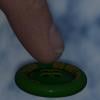Skeleton and Bone BoundingBox
 surreal
Posts: 170
surreal
Posts: 170
Interesting discovery. The Min or Max coordinates of a node/bone WSBoundingBox can extend beyond the relative Min or Max of the skeleton's WSBoundingBox that the node exists in.
ie. DzNode.getWSBoundingBox().getMin().m_y < DzSkeleton.getWSBoundingBox().getMin().m_y where DzNode is in DzSkeleton e.g. lFoot is in Genesis2
I can understand it for oriented box but not for axis aligned.
That has to be a fault.


Comments
If a DzSkeleton has geometry, the WSBoundingBox for that node will be the bounding box for the used vertices of the geometry on that node; it is a node regardless of whether or not it has bones. If a DzSkeleton does not have geometry, the WSBoundingBox of that node is built from the WSBoundingBox of its bones; which may or may not have geometry of their own (not likely since 4.0.2.55, but possible). To get the WSBoundingBox of a DzSkeleton with geometry that includes the WSBoundingBoxes of its bones, you can use something like the following:
-Rob
Thank you Rob for the explaination.
So I must have been looking at a skeleton that has geometry.
As I need the skeleton's boundingbox which includes its geometry and all its bones, I will need to modify my code as you recommend.